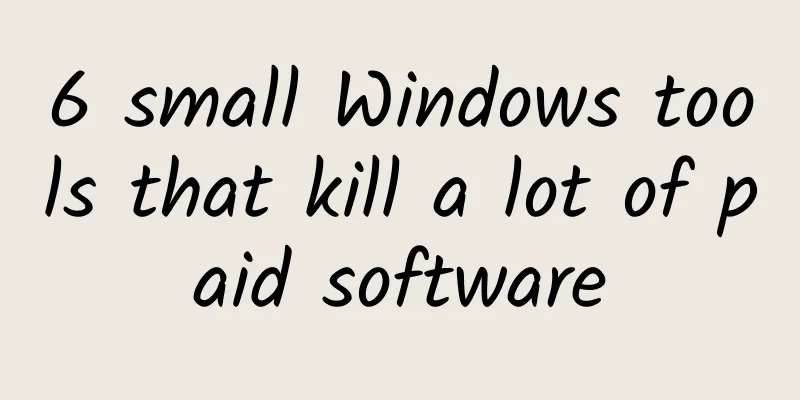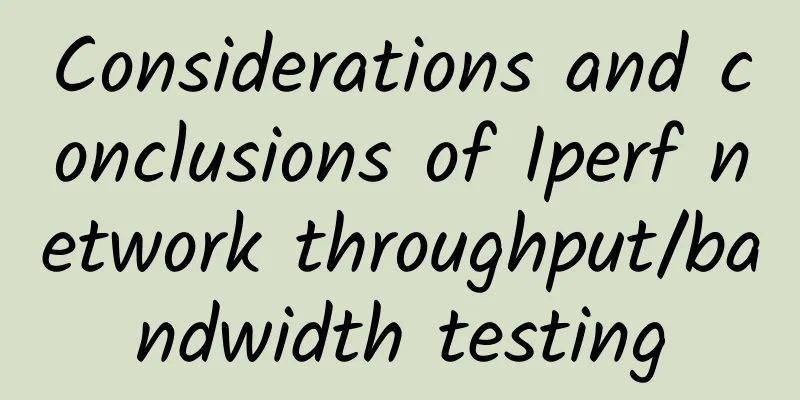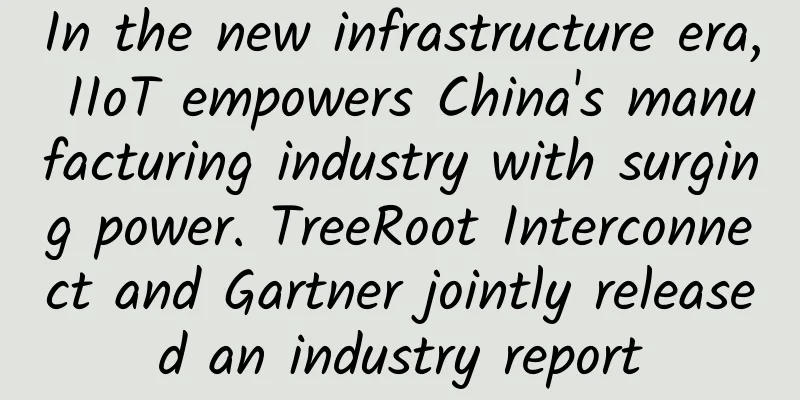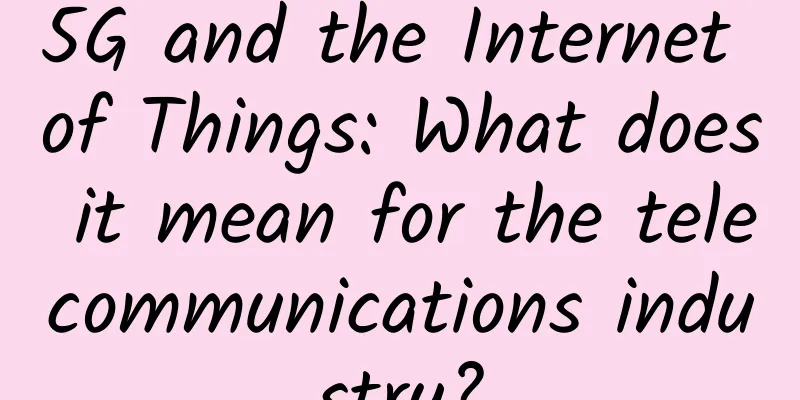Where is the future research direction of communications?

|
A few days ago, I attended the second CICC China Information and Communication Conference held in Chengdu, Sichuan. This conference is hosted by the China Institute of Communications. Compared with MWC and PT Expo, it is more academic. The guests attending the conference are basically the authorities in the field of ICT, professional leaders from major research institutions and universities. The content shared by the guests is also the latest research results, or the latest meeting progress of major standard organizations, full of useful information. Today's topic will revolve around "Future research directions of communications." This topic sounds big and far-fetched, but it is actually one of the most worthy issues for us to think about at the moment. As we all know, we are now in the early stages of 5G development. At the same time, we are also in an unprecedented period of confusion. The 5G communication standard we have just launched is the strongest generation of standards in history, but also the most "confusing" generation of standards. Since its birth, its development prospects have been full of controversy and doubt. Many people believe that 5G is a huge innovation and breakthrough that will usher in a new era of "Internet of Everything". However, many people believe that 5G has no substantial technological innovation and has not found the real demand pain points, so it is likely to fail. In the context of such debate, people are inevitably more anxious. 5G has not yet been verified, but now we are eager to confirm its direction. So, where should the next generation of communication standards go? In addition to mobile communications, what is the future research direction of the entire communication technology, including the Internet? At this conference, many experts and scholars expressed their views on the above issues. "Where is the future?" also became the "hidden theme" of the conference. Based on what I have seen, heard and thought, I have organized the experts' opinions into the following aspects: 1. Simple or complex There are generally two principles for choosing future directions: one is to meet future needs, and the other is to solve existing problems. The biggest complaint experts have about current communication networks is the "increasing network complexity." With the development of the times, communication network technology is also developing continuously. The overall trend is that it is becoming larger and more complex, and the entropy increase effect is obvious. Every time engineers promote new technologies, they say that these technologies will make our networks simpler and easier to maintain. But in fact, new technologies often bring more complex networking, more complex protocols, and more complex business processes. Academician Wu Jiangxing directly questioned the currently popular virtualization technology during his keynote speech. He believes that "relying on virtualization technology to prosper network functions is ultimately unsustainable", "the development of network services has made it impossible to completely decouple network functions from them", and "the complexity of core routers has increased dramatically, and the amount of software code has exceeded 100 million lines, which has completely deviated from the original intention of Internet development." Every sentence is thought-provoking and thought-provoking. Isn't it? The development of technology is based on demand. You may say that the network is becoming more and more complex because users have more and more demands. However, ask yourself, how much of the technology we develop is really based on user needs? How much is "hypothetical" demand? Is the newly added code 100% necessary? In fact, what more companies are doing now is to create demand, complexity, and workload. The reason is self-evident, and it is euphemistically called "for the development of the industry." At present, our communication network has become a monster with extremely huge size and extremely complex architecture. Faced with such a monster, how to make it lose weight is an important direction of technological development. Therefore, research institutions and individuals proposed the simplest network, or the intelligent network, or the minimalist network, and took it as their research direction. To achieve the simplification of the network, on the one hand, the basic functions should be simplified, and on the other hand, the network hierarchy should be flattened. Experts all mentioned the necessity of AI technology for the simplification of the network, and believed that AI is an opportunity to slim down the network. In addition, operators' courage and determination to accelerate the elimination of backward technologies is also a key factor in creating the simplest network. 2. Challenges of Heterogeneous Networks When it comes to the complexity of the network, in addition to the complexity of internal networking and functions, the most important "accomplice" is actually heterogeneous networks, or even hyper-heterogeneous networks. What is a heterogeneous network? Simply put, a network that uses multiple technical standards to meet diverse needs is called a heterogeneous network. For example, we now use 2G/3G/4/5G, and even add Wi-Fi and Bluetooth to provide a variety of access technologies, which is a heterogeneous network. Heterogeneous network itself is a positive word, representing the diversity of the network, which can support everything, big or small. Moreover, heterogeneous network is helpful for making full use of spectrum efficiency. However, the consequence is that it greatly increases the complexity of the network and the difficulty of network maintenance. It is a bit like a country's army. If it uses weapons of multiple calibers, then its logistics will be a nightmare. Heterogeneous networks will also significantly increase the energy consumption of communication systems, which is also a fatal flaw. With the development of communication technology, can a unified access technology be used to integrate all standards in the future? Can the bearer network and core network also be "de-heterogeneous"? Experts attending the meeting proposed such a concept. They believed that this is feasible and worth studying. By the way, some experts have suggested that 6G may study "flexible spectrum sharing technology." We know that there are many access technologies, and different access technologies use different spectrums. Our traditional spectrum allocation model is fixed division, that is, assigning spectrum to specific objects. This model results in spectrum resources being forcibly divided and occupied. But in reality, spectrum utilization is unbalanced among users. In many frequency bands, utilization is less than 10%. Therefore, the "flexible spectrum sharing technology" was proposed. That is, spectrum resources are occupied dynamically, and a certain user can flexibly use idle spectrum or unlicensed spectrum (similar to LTE-U), and multiple operators and multiple standards share spectrum (5G uses 2/3/4G, or China Telecom 5G uses China Unicom 5G frequency band, which just meets the requirements of China Telecom and China Unicom co-construction). This indeed provides a good idea for solving the problem of insufficient spectrum resources. 3. The Ultimate Form of Antenna RF I have previously explained to you that frequency × wavelength = speed of light. The frequencies used in our mobile communications are constantly getting higher, from 800M, 900M to 1800M, 1900M, and now to 2600M and 3500M for Sub-6G, and will soon enter the millimeter wave. In the future, 6G will enter the terahertz field. So, as the wavelength keeps decreasing from millimeters to microns, or even smaller, in what direction will our antenna form develop? Some experts have proposed a concept - super surface. Specifically, it is a plasma surface scattering element and a metasurface for beam steering. The electromagnetic properties of the antenna are dynamically adjustable and can be effectively used for signal transmission and reception in the terahertz frequency band, as well as for stealth and imaging. For a detailed description, please refer to the following PPT: Combined with the "tape antenna" demonstrated by Ericsson this year and the "glass antenna" proposed by Japanese manufacturers, I believe that the antenna form will change further in the future. Maybe the coating on the entire wall or the entire facade glass of the building are antennas. 4. Deterministic latency At this conference, many experts repeatedly mentioned latency. We know that among the many features of 5G, one of them is "low latency". 5G is said to be able to achieve a latency of 1ms, which is much lower than 4G. However, experts believe that the latency value should not be simply pursued to be low, but more importantly, "deterministic latency" should be pursued. Deterministic latency means that the latency value is in a stable state. In other words, your latency can be 10ms, but it must be guaranteed to fluctuate within a very small range of 10ms. It cannot be 10ms for a while and then suddenly jump to 50ms. In most scenarios, what is pursued is not extremely low latency, but latency stability. For example, in remote surgery and remote driving, if latency jitter occurs, the consequences will be fatal. One expert once said: "Whoever can master deterministic latency will have the initiative in the market." (Something like this shows the importance of deterministic latency.) 5. Flexible network Flexible network is also a hot word at this conference. The so-called flexible network, in simple terms, is the software-based network and service, providing different network capabilities according to different business scenarios. Previously, operator networks were rigid networks with closed network architecture and network element equipment, scattered resources, and inability to quickly configure. In fact, flexible network is not a new term. NFV/SDN is actually a way to implement flexible network. Experts believe that the demand for flexible networks is more urgent than ever before. The lack of flexibility in existing networks has affected the rapid deployment of services and the rapid response to user needs. A perceptible, reconfigurable, and evolvable flexible network pays more attention to the performance of upper-layer applications and is more in line with future user needs. Traditional SDN focuses more on the underlying network. Similar to flexible networks is the "full-dimensional definability" mentioned by Academician Wu, which means software-defined function orchestration, software-defined multi-modal forwarding, and software-defined multi-modal routing. Everything in the communication network can be software-defined. 6. Intrinsic security There is no need to explain the importance of safety, and the content related to safety accounted for a large proportion of this conference. Compared with traditional security defense, this time more emphasis is placed on endogenous security. Traditional security is "exogenous" security, based on boundary protection and building "walls". Endogenous security emphasizes that the security system of the information system must have the characteristics of self-immunity, internal and external cultivation, and self-evolution. Current network security faces four main challenges: security vulnerabilities caused by software and hardware design flaws; the open industrial ecosystem in the era of globalization, which makes it impossible to completely control or eliminate system backdoors; system software and hardware code problems are difficult to exhaust and thoroughly investigate; and the security of software and hardware products cannot be controlled from the source. The main idea of existing system design is performance-oriented, lacking security analysis and design, and no security indicator quantification system has been established. In addition, the structural design is not developed for software developers, resulting in some incorrect security architecture when the system is built. To put it bluntly, security protection was not taken into account when the system was designed. Endogenous security emphasizes that the "immune system" should be designed into the system during system design so that the system has immunity and can eliminate various risks. Academician Wu believes that intrinsic security is a hallmark feature of new-generation IT/ICT/ICS/CPS and other technologies. 7. AI The most important and most recognized future direction is AI artificial intelligence. All experts believe that AI is an indispensable component of the future network. Similar to the above-mentioned endogenous security, some experts have proposed "endogenous intelligence" and "network intelligence", that is, the network itself integrates AI and has an AI brain. The telecommunications sector is currently the largest AI market segment. According to forecasts, by 2025, the global telecommunications industry's investment in artificial intelligence software, hardware, and services is expected to reach US$36.7 billion. In the 5G era, the connection between mobile communication networks and AI will be closer. On the one hand, telecommunications networks and terminals will generate a large amount of data, providing data sources and learning samples for AI mining and analysis. On the other hand, all levels of the communication network (cloud, edge, and end) can provide computing resources for AI. In addition, many scenarios of communication networks are very suitable for AI to establish learning models, which facilitates the rapid implementation of AI. At present, the industry has also classified network intelligence capabilities into six levels, just like the autonomous driving of the Internet of Vehicles, namely:
If it reaches L5, network operations will be unmanned and completely driven by intent. At present, AI is being applied most rapidly in mobile communication networks in maintenance and optimization. For example, AI technology can be used to optimize wireless network parameters, improve wireless resource utilization, and increase network capacity. AI technology can be used to predict user movement trajectories and business behaviors, optimize content caching strategies, and improve user experience. AI technology can be used to manage Massive MIMO antenna arrays, quickly adapt to changes, and improve access experience. With the help of AI technology, slice resources are managed to automate slice configuration, help slice failures to recover quickly, and improve slice performance. With the help of AI technology, the working power of equipment is dynamically adjusted to control equipment energy consumption. … Examples of AI application scenarios Because the value of AI is so obvious, all major equipment manufacturers and operators are now investing a lot of energy in the implementation of AI. Among the directions mentioned today, AI can be said to be the most clear development direction. In addition to the above directions, there are also concepts such as endogenous computing power, identification addressing, space-ground integration, digital twins, etc., which were all mentioned at this conference. Due to space limitations, it is impossible to introduce them one by one, and they will be explained through special topics later. In short, through the sharing of experts, Xiaozaojun has a general understanding of the future development direction of communication technology. It should be emphasized that the conference is, after all, an academic discussion and sharing, and many contents and concepts are just an idea, not necessarily correct. If it is deterministic, it is not an idea, but a plan. In the future, new ideas may emerge, or some ideas may be proven to be wrong. We cannot blindly believe, follow or hype. Well, that’s all for today. There is a lot of useful information here. Welcome to share your views in the comments and discuss with us! |
<<: [5G Encyclopedia] How does 5G implement TDD?
>>: 5G and IoT set off a revolutionary wave and provide new value
Recommend
Do you know some new features of RocketMQ 5.0? Let me tell you.
In order to evolve towards cloud native and impro...
MIIT releases three-year action plan for industrial internet
MIIT releases three-year action plan for industri...
Why is 5G important for the Internet of Things?
The fifth generation of network bandwidth arrives...
BandwagonHost has launched a new SoftBank line in Osaka, Japan, with an annual fee starting from US$65
bandwagonhost is a subsidiary of the old IT7 comp...
Happy New Year!
The rat has gone and the ox has come, bringing ne...
How much does it cost to build a 5G base station?
Since the official announcement of commercial use...
spinservers: $25/month - 4 cores/16GB RAM/40GB hard drive/10TB@1Gbps/San Jose data center
spinservers recently released a VPS ready for pal...
V.PS 10% off, US CN2 GIA/Hong Kong CMI/Japan IIJ & Softbank/Australia & UK AS9929 etc. available
V.PS is a cloud server site under xTOM, providing...
Hyperscale Data Centers vs Micro Data Centers
Some say the data center of the future is very di...
How to avoid the pitfalls of integrated wiring?
There is a lot of knowledge involved in integrate...
5G network equipment security assessment escort "new infrastructure"
Unlike 4G mobile communication technology, which ...
The Trump administration changes its policies overnight: the study visa rules are changed back to the old ones, and the new policy was aborted in less than a week
This article is reprinted with permission from AI...
The unlimited package has been cancelled? What does this mean for 5G?
It is reported that China Telecom announced that ...
HostingViet: Vietnam VPS annual payment 40% off, 2GB/20G SSD/unlimited traffic/annual payment starting from 190 yuan
HostingViet has launched a promotion for the firs...
Understand the difference between disaster recovery and backup in data centers in three minutes
1. Introduction Sudden failures in data center op...









